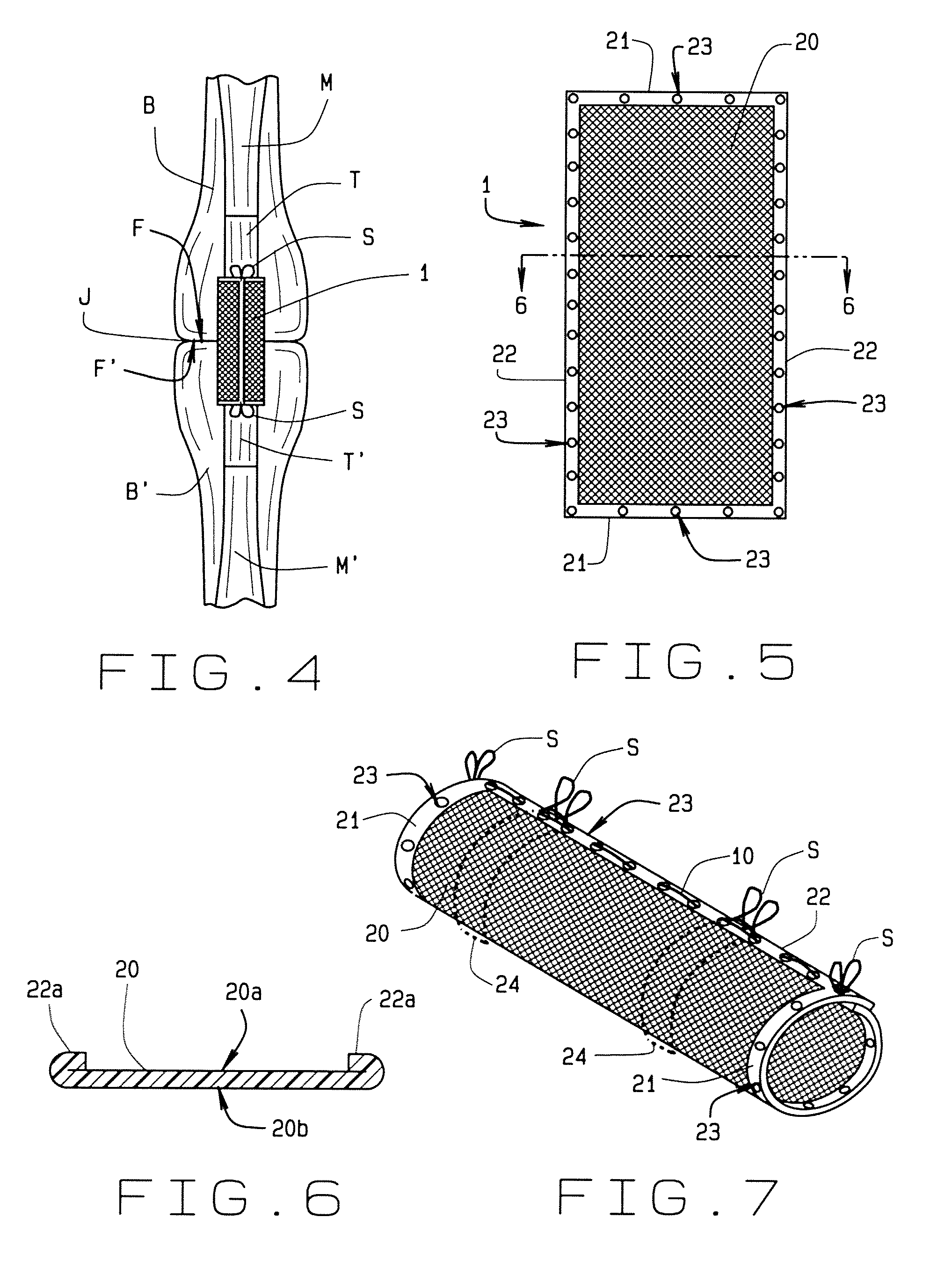Terminal tissue attachment and repair device
a tissue and endoscope technology, applied in the field of endoscopes, can solve the problems of putting the tissue at risk of mechanical degradation, affecting the operation of the joint under repair, and unable to fully grasp the endoscope, so as to facilitate the fixation of the proximal componen
- Summary
- Abstract
- Description
- Claims
- Application Information
AI Technical Summary
Benefits of technology
Problems solved by technology
Method used
Image
Examples
Embodiment Construction
[0067]The present invention overcomes the prior art limitations by providing a terminal tissue attachment and repair device also suitable for use upon other elongated body tissue such as ligaments, nerves, and the like. The “Tendon Trap,”“Finger Trap,” or tendon repair device is composed of a resorbable or non-absorbable suture material. The invention has a construction of a diagonal crisscrossing, interlocked sheet of mesh like construction which has the overall shape of an open or slit cylinder, or alternatively a conical shape. The longitudinal slit in the mesh cylinder or cone has a longitudinal opening to allow the tendon end(s) to be easily placed within the cylinder, whether the tendon has already been approximated or the cut ends remain unattached. The cylinder thus formed is generally hollow and the device attains an overall tubular form.
[0068]The grossly approximated tendon is then placed inside the open “Tendon Trap” cylinder or cone which wraps around and envelops the te...
PUM
 Login to View More
Login to View More Abstract
Description
Claims
Application Information
 Login to View More
Login to View More - R&D
- Intellectual Property
- Life Sciences
- Materials
- Tech Scout
- Unparalleled Data Quality
- Higher Quality Content
- 60% Fewer Hallucinations
Browse by: Latest US Patents, China's latest patents, Technical Efficacy Thesaurus, Application Domain, Technology Topic, Popular Technical Reports.
© 2025 PatSnap. All rights reserved.Legal|Privacy policy|Modern Slavery Act Transparency Statement|Sitemap|About US| Contact US: help@patsnap.com



